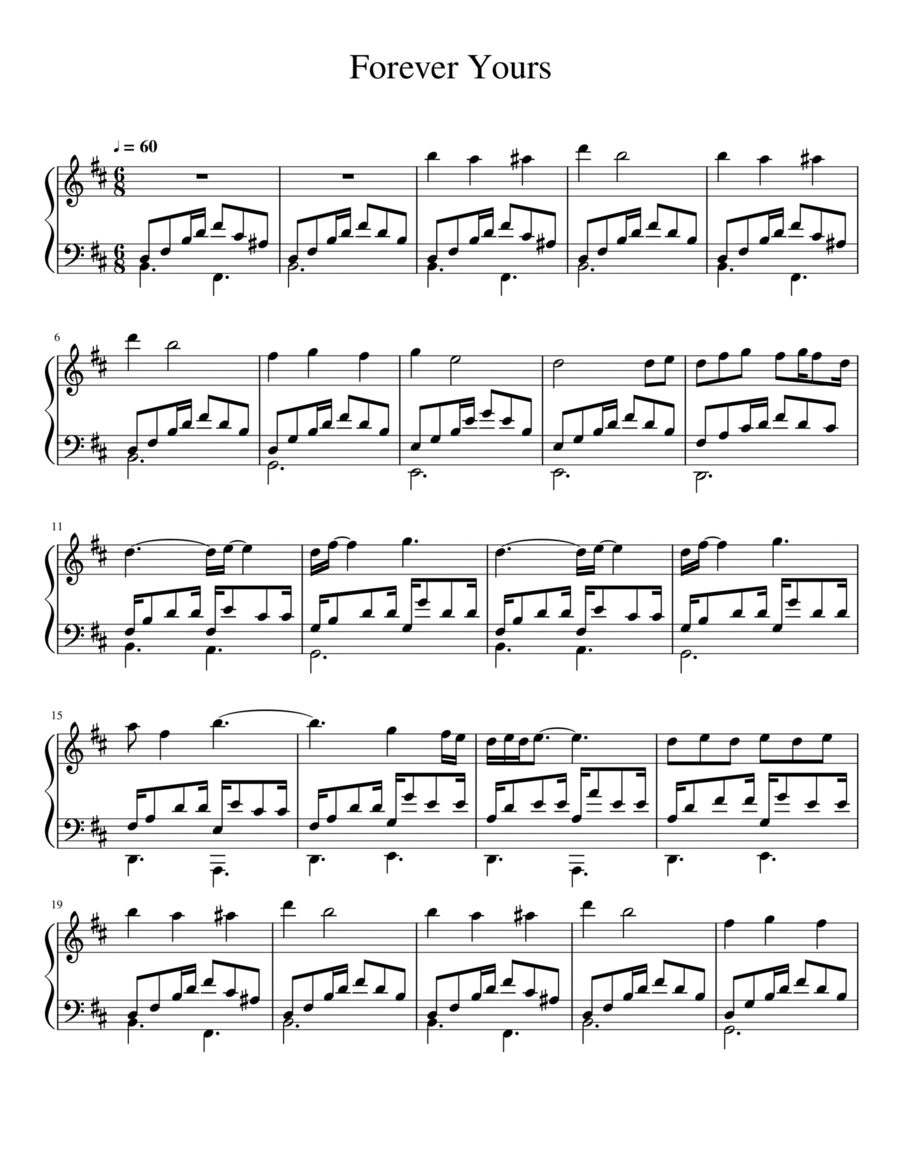Piano Solo - Level 3 - Digital Download SKU: A0.1368418 By Jose Valladares. By Jose Valladares. Arranged by Jose Valladares. Classical. Score. 3 pages. Circlesquare Music #952765. Published by Circlesquare Music (A0.1368418). Introducing Forever Yours, a profoundly touching piano composition that whispers tales of unwavering commitment and heartfelt devotion. This enchanting piece, from the beloved album A Celebration of Love, and Life by the renowned artist and composer Jose Valladares, is an intimate serenade to the everlasting bond between souls.With a soothing tempo of 60, Forever Yours gently unfolds like the first light of dawn, ushering in a day filled with promise and affection. The composition is a tender narrative of love's enduring vows, a melody that flows like a timeless river through the landscapes of the heart. Each note is a delicate touch, a soft word of assurance, and a steadfast step side by side on life's journey.Forever Yours is not merely a piece of music; it's a heartfelt covenant set to the rhythm of life's most profound emotions. It invites listeners to delve into the depths of fidelity, to reminisce on moments of deep connection, and to celebrate the promise of a love that stands unwavering against the test of time. This piece is ideal for those who cherish the bonds of love, for pianists seeking to express the depth of their loyalty through the keys, and for anyone who treasures the beauty of a commitment that knows no end.Allow Forever Yours to cradle you in its gentle embrace, surrounding you with melodies that speak of a love that is steadfast, pure, and true. This composition is a testament to the bonds that flourish over time, a soothing lullaby for the heart, and a celebration of the constancy that true love brings.
